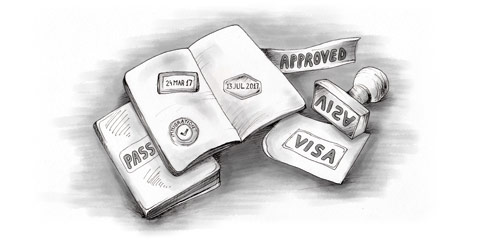A few useful tips
- Getting your European residency certificate is not the easiest of tasks and, depending on the region, the process may differ slightly. If you have any questions, ring the appropriate office .
- Be aware that the majority of civil servants will only speak Spanish and you must submit Spanish versions of all the necessary forms.
- Be prepared to wait around, even when you have a scheduled appointment.
How to apply
The first step is to make an appointment. To do this:
- Click here - there is info available in EN, but the process for an appointment is broken
- Select Cita Previa Extranjeria and click Acceder al Procedimiento
- In the Provincias Disponibles drop down box, select the appropriate Spanish region and click Aceptar
- Select Policia-Certificados UE and click Aceptar
- A list of documents you need for your appointment will appear, click Entrar
- Enter your details and click Aceptar
- Select the best appointment for you
- Confirm your appointment and save the PDF appointment confirmation
Before attending your appointment, you need to pay the required application fee:
- Fill in the Modelo 790-012 tax form online (make sure you select Asignación de Número de Identidad de Extranjero (NIE) a instancia del interesado)
- Download and print the completed version
- Take all pages to a bank and pay the required fee (12€ Dec.2018)
- Make sure you get proof of payment
The final step is to attend your appointment with the following documents:
- Completed EX-18 application form (original and one photocopy)
- Your Modelo-790-012 proof of payment (do not make a copy of this document, original is required)
- Passport or ID card (original and one photocopy)
- Printed PDF appointment confirmation
- The relevant documentation depending on your personal circumstances:
a) If you are employed:
- Employment contract registered in Sepe (needs to be for longer than 3 months) or declaration
of the contract including company’s name, address, taxpayer ID and social security account
- Social security number
b) If are self-employed:
- Proof of registration in Censo de Actividades Económicas
- Proof of registration in Registro Mercantil
- Social security number
c) If you are unemployed:
- Proof of private or public health insurance
- Proof that you/your relatives have enough resources to live in Spain for 5 years
d) If you are a student:
- Proof of university registration
- Your European Healthcare Card and two photocopies or proof of private health insurance for
the length of your studies
e) If you are a relative of an EEA member country citizen:
- Proof that you are a relative of this person (e.g. marriage certificate)
- Proof that your relative is employed, self-employed or has enough resources to live in Spain
- Proof that your relative has private or public health insurance
You will be given an EU residency certificate (some right away, some will have to come back to collect it). This certificate is a small bank card-sized piece of green paper that states you are now a residente comunitario en España (a community resident in Spain). It will contain your name, nationality, date and place of birth, Spanish address and your NIE. Along with your driver’s licence/passport, this will act as a form of ID.

